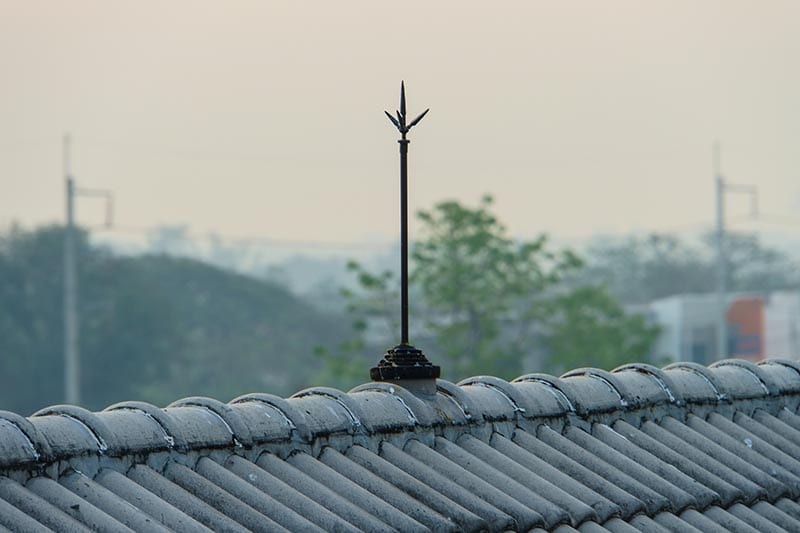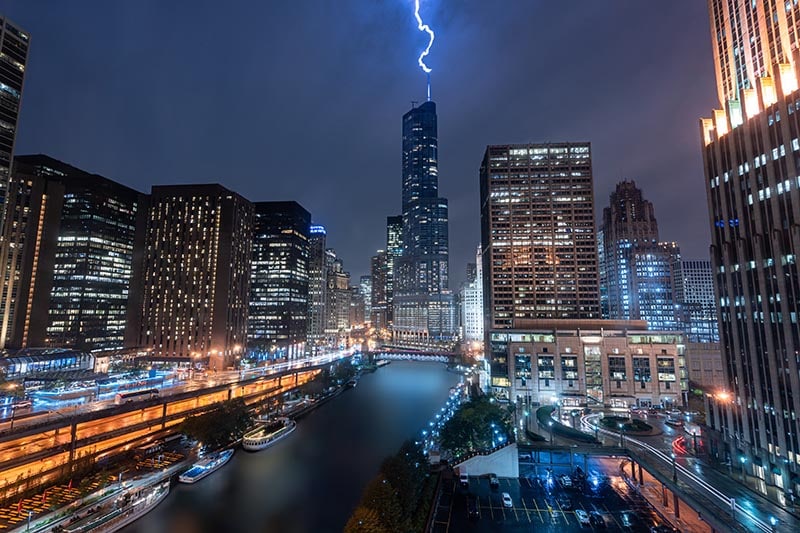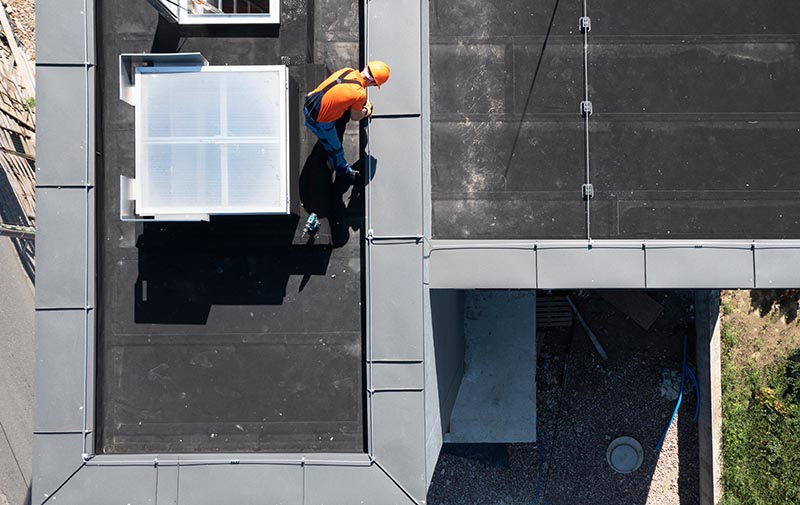How Do Lightning Rods Work? Purpose, Types & FAQ
-
Visnja Radosavljevic
- Last updated:

When the weather is bad and there are storms outside, many people fear that their homes might get struck by lightning. Fortunately, there are various ways to protect your home, such as with a lightning rod on your house.
Lightning rods have been around since 1749 and help prevent possible lightning strikes on buildings. However, They’re not 100% reliable, which may lead many people to wonder how exactly they work. The short answer is, they stick out from the roof of a building and attract and capture lightning.
Here, we provide you with detailed information about lightning rods, including how they work, their types, their pros and cons, and frequently asked questions about them.
What Is a Lightning Rod?
Most of us have lightning rods on our homes/buildings, and although we know what they do, we may not fully understand what exactly they are and how they function. Lightning rods are external terminals on houses, buildings, and similar structures and are just a component of a structure’s external lightning protection system.
These terminals aim to attract lightning to prevent direct contact with the structure and act as a point of impact. This way, lightning rods prevent lightning from striking unwanted places or people.

What Does the Rest of the External Lightning Protection System Look Like?
An external lightning protection system consists of several different components, including:
- Lightning rod
- Down conductor
- Grounding system
- Surge arrestors
How Does It Work?
A lightning rod functions on a simple principle: It sticks out from the roof of the home/building and attracts and captures lightning bolts. To capture a lightning bolt, a lightning rod needs to have a metal tip and body that are connected to a low-impedance earthing system by a conducting network.
Getting a lightning rod typically requires professional installation because the rod needs to be at the highest point of the structure so it can capture and conduct a lightning strike safely.
The lightning rod is also connected to copper and aluminum cables that go around the building and into the ground. When the lightning strikes, the rod attracts it and channels it through the cables until it safely reaches the ground. In this way, your home is protected from an energy surge.
What Are the Different Types of Lightning Rods?
There are several types of lightning rods, each with slightly different abilities and specifications. They are all efficient, so the one you should get depends on the one that suits your needs best.
- Simple lightning rod — This is the simplest type of lightning rod, and it was invented by Benjamin Franklin in 1749. People still use these lightning rods today due to their simplicity, low cost, and easy installation.
- PDC lightning rod — This is an advanced, broad type of lightning rod that reduces the time of atmospheric discharge of electricity. It provides a high level of protection and maximum durability. It’s also easy to install and can operate in any atmospheric condition.
- E lightning rod — This advanced type of lightning rod contains an electronic ESE system. It offers the best and safest protection from lightning. It also reduces the time of the electrical atmospheric discharge, increasing its functionality. PDC.E lightning rods provide maximum protection, don’t need an external power supply, and are easy to install. They can also function in any atmospheric condition.
Where Is It Used?
Lightning rods are used for all types of houses and buildings that want to enhance their lightning protection. Since lightning rods are typically inexpensive, many people choose them to protect their home/building from getting hit by a direct lightning strike and to prevent fire hazards.
Advantages of Lightning Rods
One of the most significant advantages of lightning rods is their main feature, which is to protect your home from lightning. However, lightning rods have multiple other benefits, including:
- They prevent property damage.
- They are inexpensive.
- They are easy to install.
- They don’t require maintenance.
- They don’t take up much space.
- They protect your home’s electrical system.
Disadvantages of Lightning Rods
Although lightning rods have multiple benefits, they also have a few drawbacks:
- They don’t provide protection for non-visible homes.
- Their functionality may be limited depending on the size of the storm.
- They can occasionally attract lightning.
- They require professional installation.
- They need to be grounded properly.

Frequently Asked Questions (FAQs)
Are Lightning Rods Always Reliable?
Although highly functional, lightning rods are not always reliable. They lack functionality in non-visible homes, which is why they may fail. Another reason that a lightning rod may not function properly is if the storm is too big for the size of your lightning protection system.
However, problems with lightning rods are mostly minimal, and they rarely malfunction. It’s best to talk with professional installers when installing the whole system and ensure that it fits your needs. Also, verify that your home is in a visible spot.
Do Lightning Rods Reduce Insurance?
Many people wonder if lightning rods reduce insurance; the truth is that it depends on your insurance company.
A few insurance companies do offer discounts for people who have a lightning protection system installed. Since this is not something that all insurance companies offer, however, you will have to do further research and find verified companies that provide this type of insurance reduction.
Is Lightning Rod Installation Expensive?
The cost of lightning rod installation varies due to several factors, including:
- The area that you live in
- The type of lightning rod that you want to install
- The average labor price in your area
- The average material price
Most of the time, lightning rod installation isn’t expensive and shouldn’t cost you more than a couple thousand dollars. However, if the labor and material prices in your area are high, you could end up spending a bit more than the average.

Should All Houses Have Lightning Rods?
Since the chances of a home getting hit by lightning are quite low, there’s no need for all houses to have lightning rods. However, there are a few indicators that your home might need a lightning rod for protection:
- You have a tall home.
- You live in an area that has frequent storms and lightning strikes.
- There are tall trees near your home.
If you live in a building or any other type of higher structure, you should definitely invest in lightning rods to protect your home from fire and electrical hazards.
Conclusion
Lightning rods function on a simple principle: They act as the main point that the lightning will hit. After the lightning hits, the rod safely conducts it into the ground. Although not all homes need lightning rods, it’s best to have them if you live in an area where lightning strikes are frequent.
Featured Image Credit: witorn, Shutterstock
Contents

